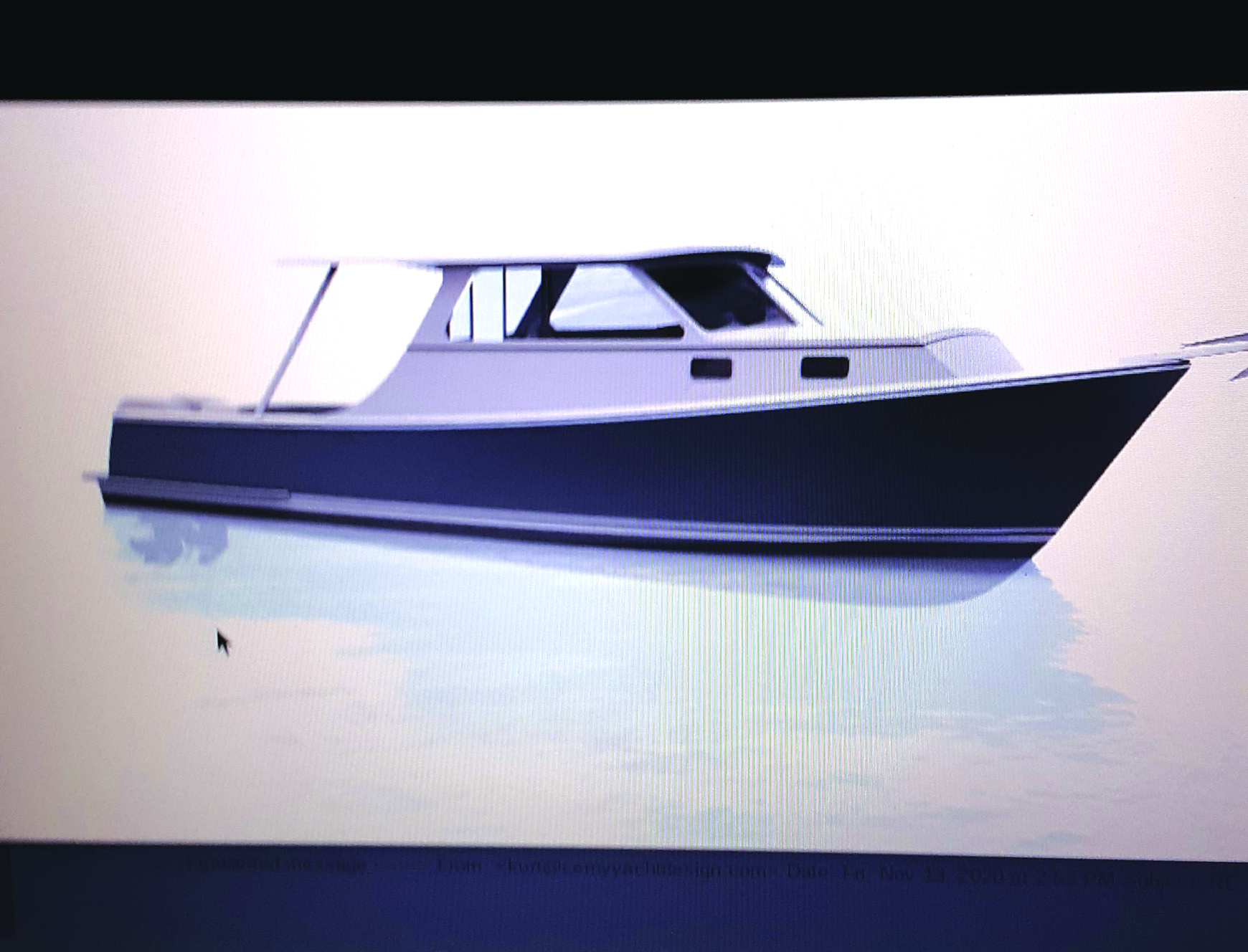
By Carol Vaughn —
Walt Chandler is building a boat in the well-equipped workshop behind his house outside Onancock. The boatis so large, he will have to remove part of a wall to bring it outside when the hull is complete.
It’s not the first boat Chandler has built. The 30-foot wooden Chesapeake deadrise will be his fifth, not counting canoes.
Chandler’s family has lived on the Eastern Shore since the 1630s and has a rich maritime history.
His great-grandfather, John Asbury Chandler, born in 1865 in Cashville, was among the last schooner captains on the Chesapeake Bay.
Chandler has been a carpenter and woodworker 43 years, but, he said, “boats are my love.”
His son, Seth, 33, is following in his footsteps as a carpenter.
Seth Chandler helps his father with the boat project whenever he can, Walt Chandler said.
“He’s got a young family, and he makes a point to come by every day and help me just a little bit,” he said.
Chandler, 65, describes the boat as his retirement project. He has been working on it 16 months so far.
“I just thoroughly enjoy it. I just enjoy the process,” he said.
His plan is to use the boat to travel around the Chesapeake Bay.
The vessel Chandler is building is a pleasure boat, but the deadrise workboat, traditionally used on the Chesapeake Bay, is the official boat of the Commonwealth of Virginia.
“‘Deadrise’ refers to the V-shaped bottom at the bow and the angle formed from the keel as it levels off to a horizontal line with the rise from the keel upward to the chine (or sideboards). A V-bottom is easier to build than a round bottom. It also has a shallow draft of two to three feet, making it ideal for the shallows of the Bay,” according to the Mariners’ Museum website.
The design was developed around the 1880s.
Chandler said he wouldn’t really call the design of his boat a deadrise, but the architect did.
“I call it a ‘Bay boat,’” he said.

People often stop by to see the progress Chandler is making — almost invariably they want to know when the boat will be finished.
There’s no completion date targeted, but Chandler said, based on his experience with such things, it’s about a 6,000-hour project.
As a point of comparison, it would take less than that to build a house.
Chandler works on the boat virtually every day.
A pleasant fragrance greets visitors to his workshop. That’s from the Atlantic white cedar Chandler is using for the planking. The framing is Douglas fir.
The cedar has been hard to get — the ever-present supply chain issue since the pandemic also affects boatbuilding, apparently.
His supplier recently told Chandler only two sawmills, one in Georgia and one in North Carolina, mill the cedar he’s using.
The construction method is called strip planking, which entails attaching hundreds of thin strips of cedar, each 3/4 inches thick by 1.2 inches wide, to the frame.
The hull ultimately will be covered with fiberglass.
It’s still a tossup whether the finished vessel will be painted white or flag blue.

Something that’s different about this boat from the others Chandler has built is that he hired a naval architect to design it and draw up plans.
“It has been a really good experience and I’ve learned,” Chandler said.
Despite having been around boats his whole life and having built boats in the past, “I’ve still learned the most in the last two years that I’ve learned the whole time,” he said.
Chandler decided to hire an architect this time “because I wanted a certain look — and it’s going to be a fairly expensive boat.”
Deadrise builders in the Bay region often use the “rack of eye” method, referring to building a boat without using drawn plans. The traditional method has been passed down through hands-on training.
Chandler learned, in part, from his father, a hobbyist boat builder.
“My father built a couple of boats and that certainly instilled it in me. I love it. I’ve loved boatbuilding since I was 10 years old,” Chandler said, recalling, “There was nothing but wooden boats when I was a teenager. All the workboats were wooden. … All the boats around here were wood — and I loved them, and I still do.”
To hone his skills, Chandler since he was young has read everything he can about boatbuilding, visited boatyards, taken a class in lofting (the transfer of a lines plan to a full-sized plan), and tried to surround himself with people who work on boats.
In addition to using an architect, Chandler is doing something else new with this boat — he’s documenting the construction on YouTube, under the name WaltWood. He’s created three videos so far, which can be viewed at https://www.youtube.com/user/waltwood24


